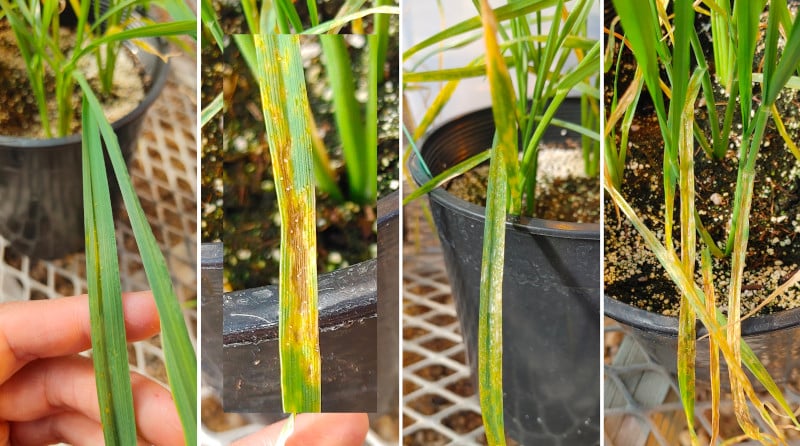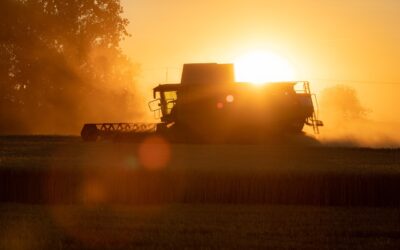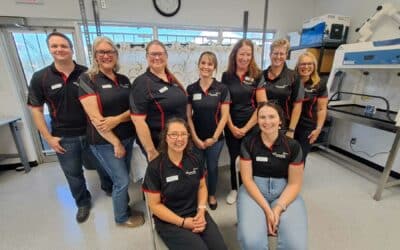In dry conditions like what are being seen in Alberta and other places on the Prairies right now, managing the risk of Aphanomyces and bacterial leaf streak (BLS) requires effective strategies to mitigate the impact of these diseases on seed crops.
Moisture is a key factor in the development and spread of these pathogens, making it crucial to adopt appropriate measures. In drier years, disease incidence may be lower, but any increase in moisture can quickly trigger outbreaks. It’s important not to forget that.
To effectively manage Aphanomyces, crop rotation and careful management practices are essential. This pathogen can persist in the soil for years, so longer rotations between susceptible crops like peas and lentils, and avoiding host crops like alfalfa, are critical to prevent pathogen buildup. Even in unfavourable years, longer rotations help reduce the risk.
Early infections of Aphanomyces have a greater impact, so it’s important to use seed treatments during the seedling stage to suppress the disease. Planting susceptible crops in fields with Aphanomyces acts as a bridge for the pathogen’s survival, even in less favourable conditions. However, major outbreaks occur in very wet years. Severely affected fields require extended rotations beyond the recommended eight years, or even longer, to minimize the presence of inoculum. Weather patterns throughout the growing season also play a role, so long-term factors should be considered.
Moisture is also a significant factor for BLS. This disease spreads through bacteria carried by wind, rain, and insects on leaves. Higher humidity and moisture in irrigated fields make BLS more problematic. Dry conditions reduce bacterial persistence, thus lowering the likelihood of disease development. Physical leaf injuries, such as those caused by hail, facilitate bacterial entry and faster disease spread. Consequently, moisture levels in wet versus dry years significantly impact BLS outbreaks.
To accurately identify these diseases, DNA-based tests are now available. They provide more precise identification of the specific pathogens responsible for the associated symptoms of Aphanomyces and BLS. Increased awareness of BLS has led to more testing and improved understanding of its prevalence. While the disease isn’t geographically limited, irrigated areas and susceptible crops like durum face higher risks. Using seed from crops with minimal bacterial leaf streak is crucial since BLS primarily spreads through infected seed or seedborne inoculum.
During the growing season, plant tissue testing can be conducted to detect both Aphanomyces and BLS. It’s essential to consider the historical disease patterns in your fields when assessing the risk of these diseases. By implementing proactive measures, such as crop rotation, seed treatments, extended rotations, and using disease-free seed, farmers can effectively manage Aphanomyces and BLS. Monitoring weather conditions and adopting appropriate strategies tailored to specific moisture levels can further enhance disease control efforts.
Related Articles
Disease Levels are Looking Good, But There’s a Catch






